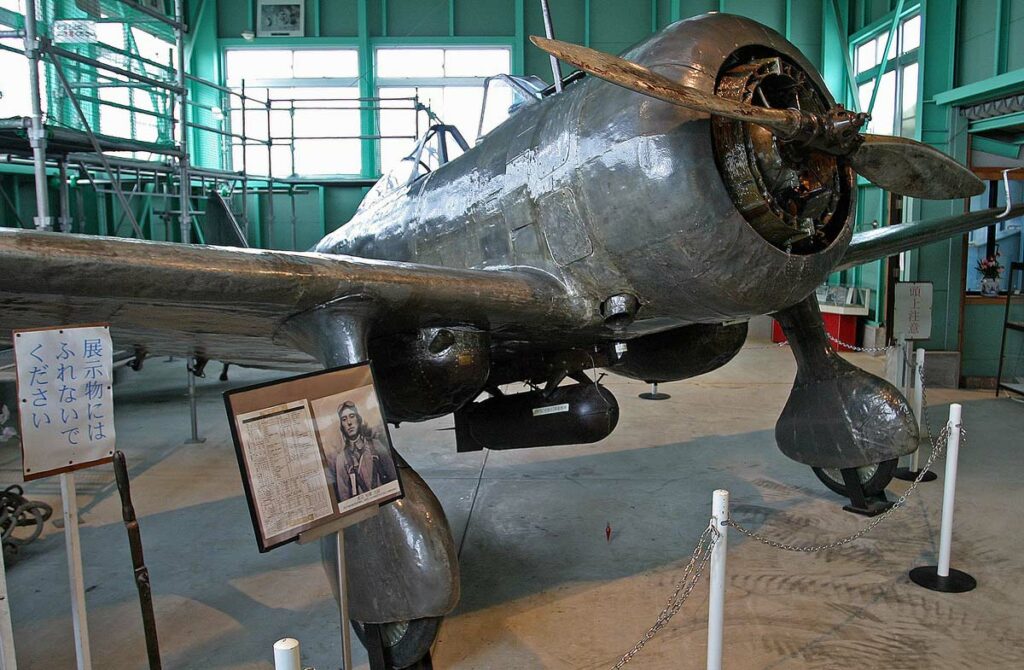The Nakajima Ki-27, a mainstay Japanese Army fighter pre-WWII, was noted for its maneuverability and ease of handling, with an air-cooled radial engine and fixed landing gear.
This article explores the Nakajima Ki-27, a pivotal Japanese Army fighter aircraft from the pre-World War II era. We delve into its development history, highlighting the context and strategic needs it was designed to meet, and examine the design choices that defined its capabilities. The article analyzes the Ki-27’s performance, comparing it with contemporary fighters, and discusses its military use in key conflicts, focusing on its armament, combat roles, and legacy.
The Nakajima Ki-27, known as the “Type 97 Fighter,” was a primary fighter aircraft of the Imperial Japanese Army Air Force (IJAAF) during the late 1930s and early years of World War II. It represented a significant step in Japanese aviation technology and played a crucial role in Japan’s early wartime operations.
History of the Development of the Nakajima Ki-27:
In the 1930s, as global tensions were rising, Japan sought to modernize its military aviation capabilities. The IJAAF issued requirements for a new fighter to replace the older Ki-10 biplane. The key requirements were superior maneuverability, speed, and climb rate, to dominate in dogfight scenarios envisioned in future conflicts.
Nakajima Aircraft Company, a prominent Japanese aerospace manufacturer, responded to this call. The development of the Ki-27 began in the mid-1930s under the leadership of chief designer Koyama Yasushi. The design team focused on creating an aircraft that would excel in agility and aerial combat, following the doctrine of the IJAAF which emphasized dogfighting skills.
The Ki-27 prototype first flew on October 15, 1936. It quickly demonstrated its superior maneuverability and handling, impressing the military officials.
The development of the Ki-27 occurred during a period of rapid military expansion and modernization in Japan. This era saw Japan engaging in conflicts such as the invasion of Manchuria and the Second Sino-Japanese War, underscoring the need for an effective air superiority fighter. The Ki-27 was designed with these conflicts in mind, aiming to outperform potential adversaries in the region.
Design of the Nakajima Ki-27:
The Ki-27’s design was a departure from the biplane configuration of its predecessor, embracing a monoplane layout. The aircraft measured 7.53 meters (24 feet 8 inches) in length, with a wingspan of 11.31 meters (37 feet 1 inch), and a height of 3.25 meters (10 feet 8 inches). Its structure primarily used light alloys and steel, with a semi-monocoque fuselage and fabric-covered wings.
A notable design feature was its fixed, spatted undercarriage, which, while reducing complexity, also limited its speed due to increased drag. The cockpit was open, offering the pilot good visibility, though at the cost of exposure to high-speed airstreams.
The Ki-27 was armed typically with two 7.7 mm machine guns, mounted above the engine. While sufficient against lightly armored targets, this armament was relatively light compared to its contemporaries.
One of the key design advantages of the Ki-27 was its exceptional maneuverability, achieved through its lightweight construction and well-designed wing structure. This agility made it a formidable adversary in dogfights. However, the focus on maneuverability came at the expense of other aspects such as armor protection, speed, and heavy armament, which became more critical as air combat evolved during World War II.

Performance of the Nakajima Ki-27:
The Ki-27 was powered by a Nakajima Ha-1 Otsu air-cooled radial engine, producing approximately 710 horsepower (530 kW). This engine propelled the aircraft to a maximum speed of around 470 kilometers per hour (292 mph). It had a service ceiling of about 12,400 meters (40,700 feet) and a range of 627 kilometers (390 miles).
In comparison to its contemporaries, such as the Soviet Polikarpov I-16 and the Chinese Curtiss Hawk III, the Ki-27 was generally more maneuverable but lacked in speed and armament. Its climb rate and agility in dogfights were its primary advantages.
Military Use and Combat of the Nakajima Ki-27:
The Ki-27’s first significant combat use was in the Second Sino-Japanese War, where it quickly proved superior to Chinese fighters. Its dominance in the skies contributed significantly to Japanese air superiority during the early stages of the war.
During World War II, particularly in the early campaigns such as the invasion of Malaya and the Philippines, the Ki-27 encountered more modern Allied fighters. Although its maneuverability was an advantage, the Ki-27’s light armament and lack of armor became significant weaknesses.
The Ki-27 saw action against various Allied aircraft, including the Hawker Hurricane and the P-40 Warhawk. As the war progressed, it became increasingly outmatched by these more advanced fighters, particularly in terms of firepower and survivability.
The aircraft was also used in the Nomonhan Incident against the Soviet Union, where it faced the more robustly armed and armored Soviet fighters. The Ki-27’s limitations in speed and armament were evident in this conflict.
By the mid-phase of World War II, the Ki-27 was being replaced by more capable aircraft such as the Nakajima Ki-43. It continued to serve in secondary roles, such as training and home defense, until the end of the war. The Ki-27 was not extensively exported, with most service limited to the Japanese Army.
The Nakajima Ki-27 holds a significant place in the history of military aviation as a symbol of Japan’s early air power during World War II. Its design prioritized maneuverability and ease of handling, reflecting the tactical doctrines of the time. While it excelled in these areas, the rapid advancements in aviation during the war highlighted its limitations. The Ki-27’s legacy is a reminder of the dynamic nature of military technology and the constant evolution required to meet the demands of modern warfare.
Back to the Warbirds section.